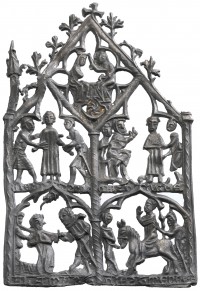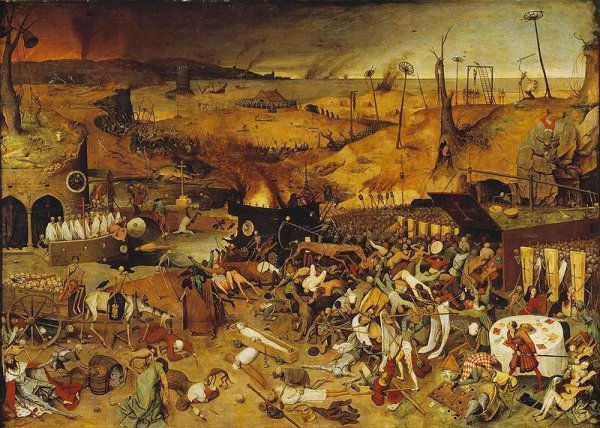
At first it seemed like the fourteenth century was going to be more of the same for the civilized world,
the bloody power schemes of the high-born, and their pretenders.
 |  Of course, there were diversions, also. |
That was
before the great famine, the plague, and the Hundred Years War made people think
something unusual might be happening.
Here is an artifact from those early
years, a fourteenth century comic book, commemorating an event that will give you an idea of what it was like in those pre-plague days. The four panels are read clockwise, from the upper left, and show the capture, trial, judgement and execution of Thomas of Lancaster.

Here is another depiction of the same event.
It was dug up on what was once the bank of the River Thames, in 2015, and depicts the end of a political battle between King Edward II of England, and his cousin, Thomas Plantagenet, 2nd Earl of Lancaster. Thomas was reportedly a rude man of ferocious temper, not unlike many of his peers, who after his death came to be venerated for his courage, and for other positive attributes that could be attached to him after he was no longer around to disprove them.
Thomas’s adversary, King Edward II,
was himself a study in rip-roaring incompetence, who eventually fell to a
coalition made up of his wife and her lover, Roger Mortimer, whom she met on a
diplomatic mission to Paris, where Mortimer was living in exile. Such a story
is far too improbable for a fictional television series, but
seems to have raised no eyebrows in the fourteenth century. Among Edward's allies were the elder and younger Hugh Le Despenser, a couple of fellows whose name suggests mafia hit man, but in reality is French for "big spender."
The Seizure of Roger Mortimer
As to those other,
transformative events of the century, we'll be revisiting them soon.





